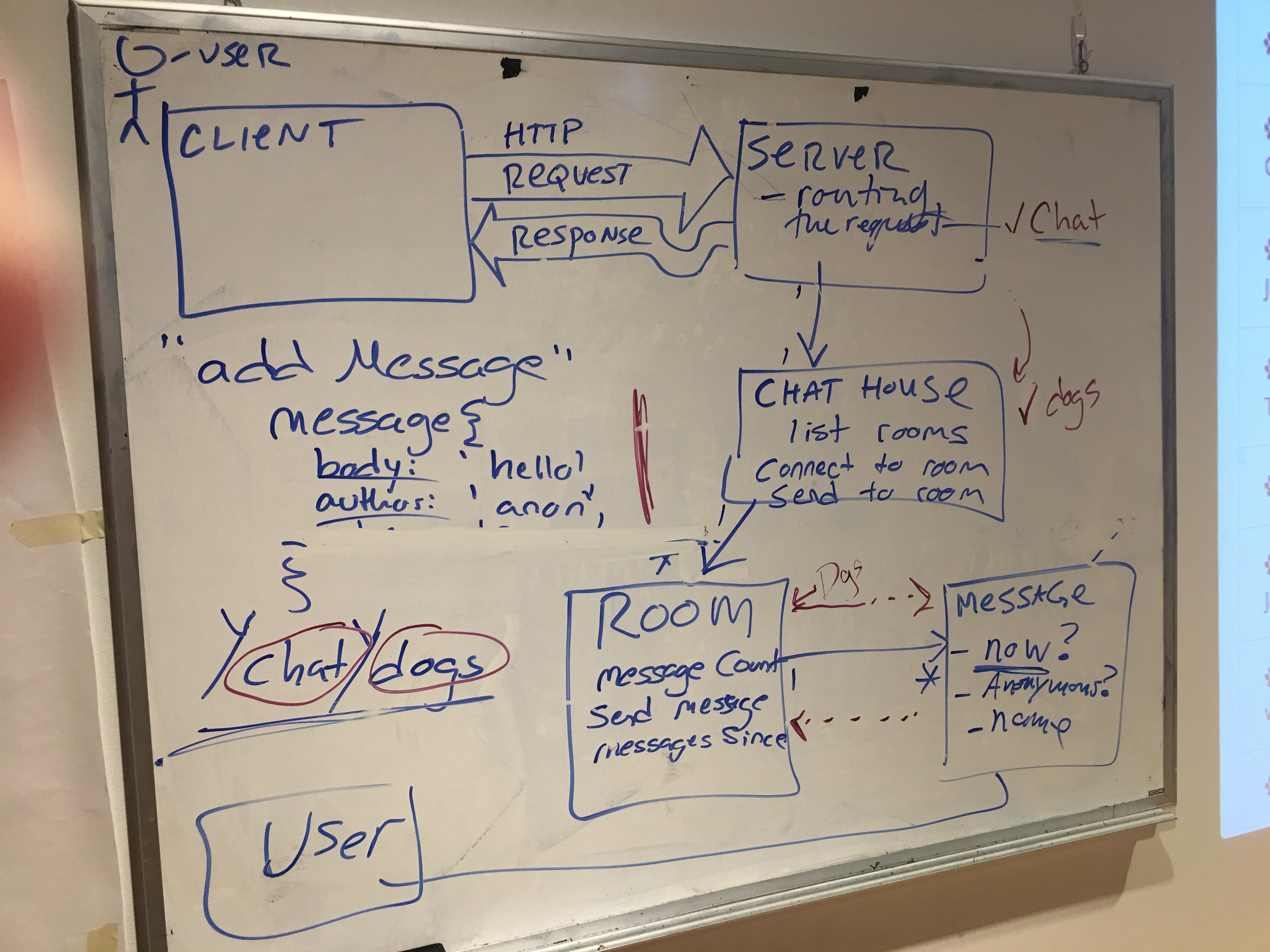The Law of Demeter
the Law of Demeter (aka the Principle of Least Knowledge) is not really a law, but a rule of thumb for designing object-oriented programs.
"Only talk to your friends."
The Law of Demeter Explained
Explanation in plain English:
- Your method can call other methods in its class directly (via
this)
- Your method can call methods on its own fields directly, but not on the fields' fields
- When your method takes parameters, your method can call methods on those parameters directly.
- When your method creates local objects, that method can call methods on the local objects.
but most everything else is disallowed, especially
- sharing state using globals
- "walking down" a nested object hierarchy
- though "method chaining" is fine, as long as the object returned is the original object, or a known friend of the caller
a LoD example
If you see code like this:
let maxAge = course.students.reduce(
(maxAge, student) => Math.max(maxAge, student.age)
, 0);
if (maxAge < 18) {
then redesign your program so you can do this instead:
if (course.hasOnlyMinorStudents()) {
LoD example continued
...which implies an object-oriented design like this:
class Course {
constructor() {
this.students = [];
}
hasOnlyMinorStudents() {
return this.maxStudentAge() < 18;
}
maxStudentAge() {
return this.students.reduce((maxAge, student) =>
Math.max(maxAge, student.age), 0);
}
- the complexity of students and age
- i.e. the fact that there is an array of students,
- and each student has an "age" property that represents "years old",
- and 18 is the age of majority in the USA
- is hidden (or encapsulated) behind the simpler "course" interface
Dots In A Row
don't confuse method chaining (often good) with feature envy (usually bad)
Method Chaining
With method chaining, you are usually calling the same object -- or at least the same type of object -- again and again, so the number of collaborators is limited:
string.split(' ').map((s)=>s.toUpperCase()).join(' ')
Feature Envy
With feature envy (a LoD violation), you are traversing a graph of collaborators until you find the one with the data or method you want:
course.students[0].phone.sendText('hi')
| style |
dots |
collaborators |
| method chaining |
4 |
2 (String, Array) |
| feature envy |
3 |
5 (Course, Array, Student, Phone, String) |
The Single Responsibility Principle
Each object should have limited, clearly defined responsibilities.
Do one thing, and do it well.
This makes it easier to know where in the code to look when you want to add a feature or fix a bug.
It helps to increase cohesion and reduce coupling... If there are two objects with related (but separate) responsibilities, you can change the implementation of one without affecting the other.
Objects can communicate through the same stable interface without regard for the implementation.
Shallow Hierarchies
OO systems rely on pointers, so it's there's a risk of confusing designs, including:
- deep hierarchies
- parallel hierarchies
- cycles
It's best if dependencies are one-way and hierarchies are shallow.
CRC Diagrams
CRC = Classes, Reponsibilities, Collaborators

For each class (object type) in your system, make a box (or an index card). In this box, write the Class name, a list of its Responsibilities, and draw arrows to its Collaborators.
This is a useful technique that has fallen out of favor because lots of people overused it.
Don't overspecify, and don't fall in love with your design; as soon as you start to write code, your design will change. A diagram is a model of your system -- not the system itself! -- and remember:
"All models are wrong, but some are useful" - George E. P. Box (1919 – 2013)
